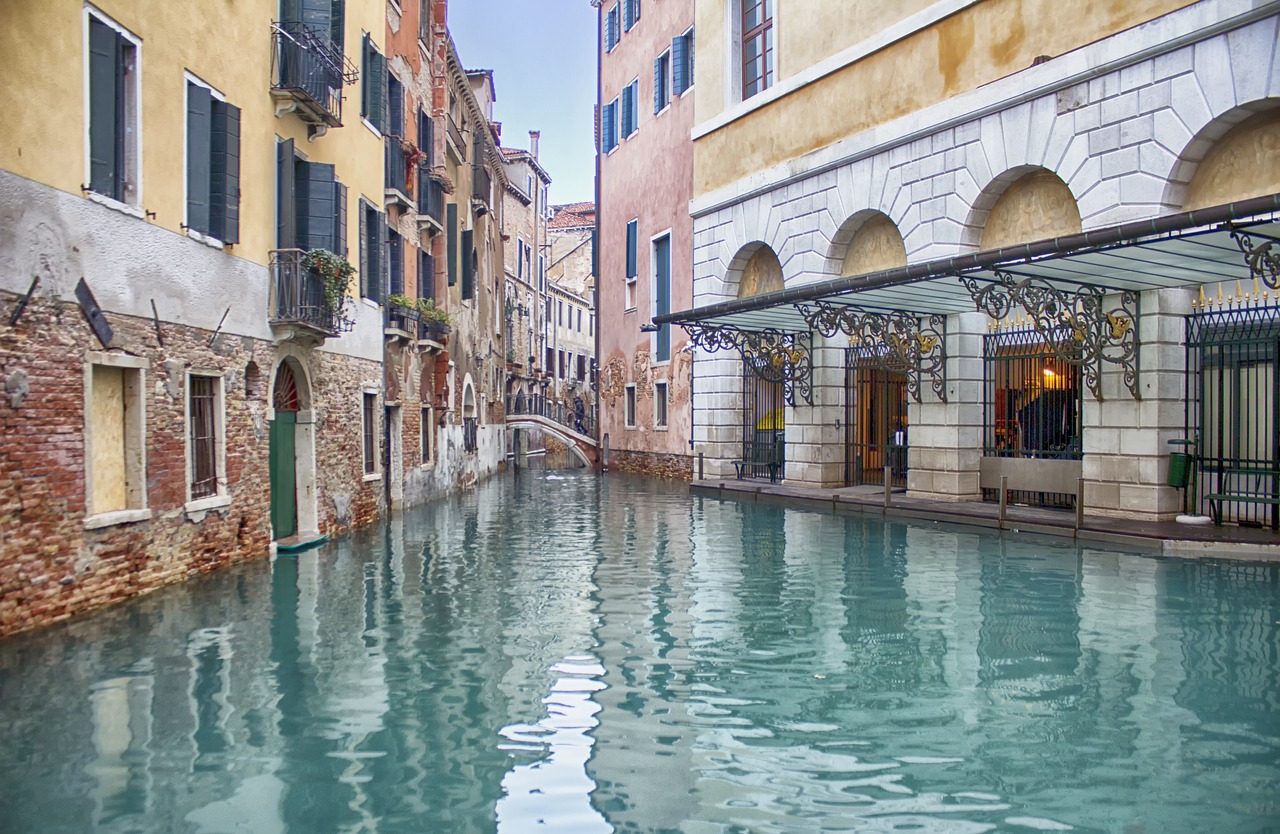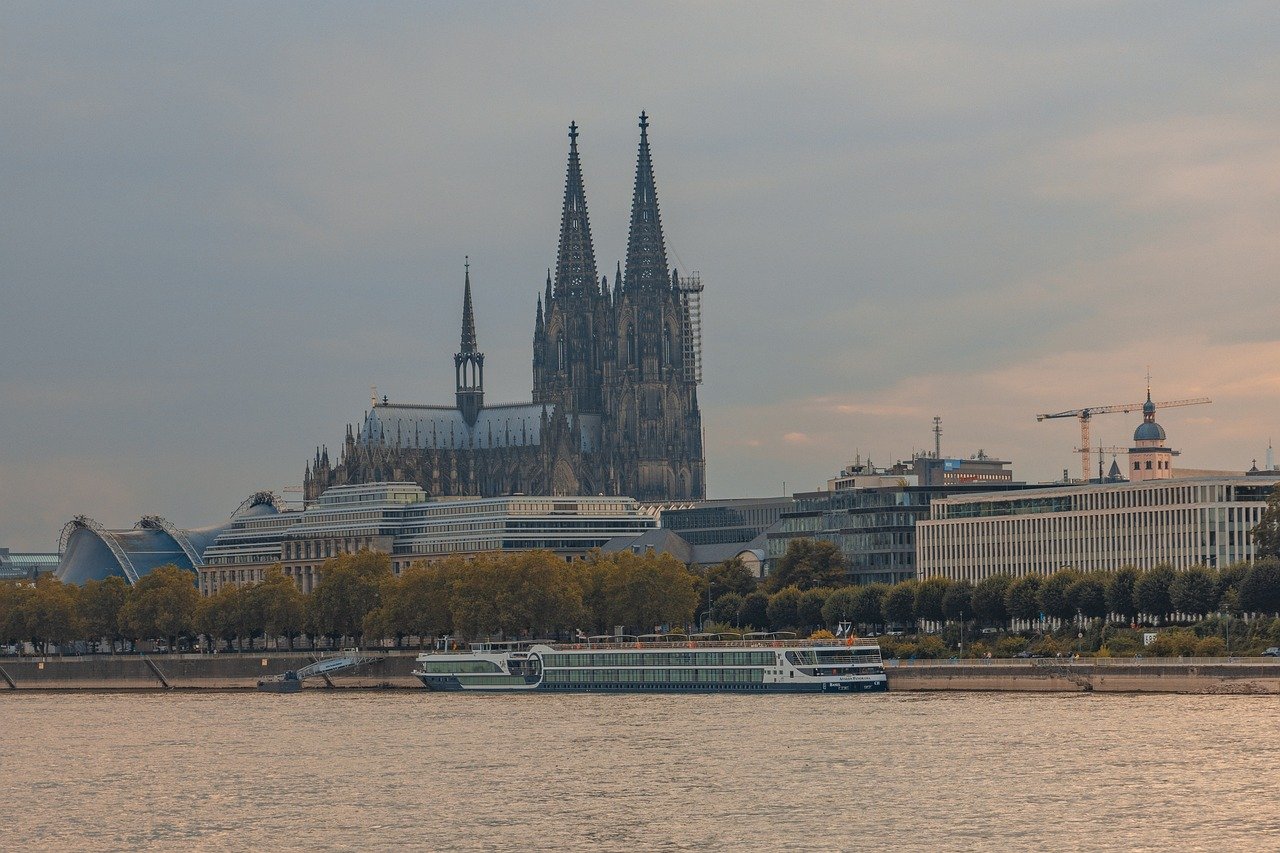How Cultural Heritage Can Foster Social Cohesion
Cultural heritage holds the power to unite people from diverse backgrounds, bridging gaps and fostering a sense of togetherness within communities. It serves as a thread that connects individuals through shared traditions, values, and experiences, creating a cohesive bond that transcends differences.
Preserving cultural heritage is vital in maintaining a community's identity and history. By safeguarding traditions, artifacts, and practices passed down through generations, we ensure that future generations have a link to their roots and a deeper understanding of where they come from.
Learning about cultural heritage is not just about the past; it is also a tool for education in the present. It promotes empathy, understanding, and respect for diverse perspectives and histories, fostering a more inclusive and harmonious society.
Community engagement plays a crucial role in the preservation of cultural heritage. When individuals actively participate in safeguarding and promoting their heritage, they develop a sense of ownership and pride in their culture, strengthening social cohesion within the community.
Local initiatives and grassroots movements are exemplary in showcasing the power of community-led efforts to protect and celebrate cultural heritage. These bottom-up approaches highlight the importance of involving community members in decision-making processes regarding their heritage.
Cultural heritage tourism not only provides economic benefits but also contributes to social cohesion by bringing people together to appreciate and learn from different cultures. By showcasing heritage sites and activities, communities can boost their local economies and create sustainable development opportunities.
Despite its significance, safeguarding cultural heritage faces various challenges. Urbanization, globalization, conflict, and climate change pose threats to the preservation of heritage sites and practices, emphasizing the need for concerted efforts to protect these valuable assets.
Legal frameworks, ethical guidelines, and international cooperation are essential in addressing the legal and ethical considerations surrounding cultural heritage preservation. These measures are crucial in preventing exploitation and destruction of heritage sites for commercial gain.
Looking towards the future, innovative approaches and strategies are needed to leverage cultural heritage for promoting social cohesion and inclusivity in diverse societies. By embracing the richness of our heritage, we can build bridges, foster understanding, and create a more united and cohesive world.

The Importance of Preserving Cultural Heritage
Exploring the ways in which cultural heritage can bring people together, bridge divides, and create a sense of unity and belonging within communities.
The preservation of cultural heritage is crucial for maintaining the identity and history of a community. By safeguarding traditions, artifacts, and practices that have been passed down through generations, we ensure that future generations can connect with their roots and understand where they come from.
When we preserve cultural heritage, we are not just protecting physical objects or historical sites; we are safeguarding the stories, values, and beliefs that define who we are as a society. It is through these cultural touchstones that we can find a sense of belonging and pride in our shared past.
Imagine a world where every trace of our ancestors' way of life has been erased, where there are no monuments, no rituals, and no stories to pass on. Preserving cultural heritage is like preserving a time capsule that allows us to glimpse into the lives of those who came before us, enriching our present and guiding our future.
Discussing how learning about cultural heritage can promote understanding, empathy, and respect for diverse perspectives and histories.
Examining the role of active participation from community members in preserving and promoting their cultural heritage.
Showcasing examples of community-led efforts to protect and celebrate cultural heritage at a grassroots level.
Exploring how cultural heritage sites and activities can drive tourism, boost local economies, and create sustainable development opportunities.
Addressing threats such as urbanization, globalization, conflict, and climate change that endanger the preservation of cultural heritage.
Discussing the need for legal frameworks, ethical guidelines, and international cooperation to protect cultural heritage from exploitation and destruction.
Looking ahead at innovative approaches and strategies to leverage cultural heritage for promoting social cohesion and inclusivity in diverse societies.

Cultural Heritage as a Tool for Education
Exploring the ways in which cultural heritage can bring people together, bridge divides, and create a sense of unity and belonging within communities.
Highlighting the significance of safeguarding traditions, artifacts, and practices that are integral to a community's identity and history.
Cultural heritage serves as a powerful educational tool, offering insights into the rich tapestry of human history and diversity. By delving into the stories, customs, and beliefs of different cultures, individuals can broaden their horizons and develop a deeper appreciation for the complexities of the world around them. Learning about cultural heritage can spark curiosity, promote critical thinking, and foster a sense of interconnectedness with people from diverse backgrounds.
Examining the role of active participation from community members in preserving and promoting their cultural heritage.
Showcasing examples of community-led efforts to protect and celebrate cultural heritage at a grassroots level.
Exploring how cultural heritage sites and activities can drive tourism, boost local economies, and create sustainable development opportunities.
Addressing threats such as urbanization, globalization, conflict, and climate change that endanger the preservation of cultural heritage.
Discussing the need for legal frameworks, ethical guidelines, and international cooperation to protect cultural heritage from exploitation and destruction.
Looking ahead at innovative approaches and strategies to leverage cultural heritage for promoting social cohesion and inclusivity in diverse societies.

Community Engagement in Cultural Preservation
Exploring the ways in which cultural heritage can bring people together, bridge divides, and create a sense of unity and belonging within communities.
Highlighting the significance of safeguarding traditions, artifacts, and practices that are integral to a community's identity and history.
Discussing how learning about cultural heritage can promote understanding, empathy, and respect for diverse perspectives and histories.
When it comes to preserving cultural heritage, community engagement plays a pivotal role in ensuring that traditions and practices are passed down through generations. By actively involving community members in the preservation and promotion of their cultural heritage, a sense of ownership and pride is instilled, fostering a deeper connection to one's roots.
Within communities, there are often local initiatives and grassroots movements that take the lead in protecting and celebrating cultural heritage. These efforts, driven by passionate individuals and groups, showcase the power of community-driven action in safeguarding the unique identity and history of a place.
Exploring how cultural heritage sites and activities can drive tourism, boost local economies, and create sustainable development opportunities.
Addressing threats such as urbanization, globalization, conflict, and climate change that endanger the preservation of cultural heritage.
Discussing the need for legal frameworks, ethical guidelines, and international cooperation to protect cultural heritage from exploitation and destruction.
Looking ahead at innovative approaches and strategies to leverage cultural heritage for promoting social cohesion and inclusivity in diverse societies.

Local Initiatives and Grassroots Movements
Exploring the ways in which cultural heritage can bring people together, bridge divides, and create a sense of unity and belonging within communities.
Highlighting the significance of safeguarding traditions, artifacts, and practices that are integral to a community's identity and history.
Discussing how learning about cultural heritage can promote understanding, empathy, and respect for diverse perspectives and histories.
Examining the role of active participation from community members in preserving and promoting their cultural heritage.
Showcasing examples of community-led efforts to protect and celebrate cultural heritage at a grassroots level. Local initiatives and grassroots movements play a vital role in preserving cultural heritage by involving community members directly in the process. These initiatives often stem from a deep sense of pride and connection to one's heritage, driving individuals to take action in safeguarding traditions and historical sites. Through grassroots movements, communities can mobilize resources, raise awareness, and implement preservation projects that reflect their unique cultural identity. By fostering a sense of ownership and responsibility among locals, these initiatives ensure that cultural heritage remains a vibrant and integral part of community life.
Exploring how cultural heritage sites and activities can drive tourism, boost local economies, and create sustainable development opportunities.
Addressing threats such as urbanization, globalization, conflict, and climate change that endanger the preservation of cultural heritage.
Discussing the need for legal frameworks, ethical guidelines, and international cooperation to protect cultural heritage from exploitation and destruction.
Looking ahead at innovative approaches and strategies to leverage cultural heritage for promoting social cohesion and inclusivity in diverse societies.

Cultural Heritage Tourism and Economic Development
Cultural heritage sites hold immense potential for driving tourism and fostering economic development in local communities. When tourists visit historical landmarks, traditional villages, or archaeological sites, they not only contribute to the local economy but also immerse themselves in the rich cultural tapestry of the region. This symbiotic relationship between tourism and cultural heritage preservation creates a sustainable cycle of growth and prosperity.
By strategically promoting cultural heritage tourism, regions can attract visitors seeking authentic experiences and unique insights into the local way of life. This form of tourism not only generates revenue through entrance fees, guided tours, and souvenir sales but also supports local businesses such as hotels, restaurants, and artisanal shops. As a result, communities can leverage their cultural heritage as a valuable asset for economic sustainability.
Moreover, cultural heritage tourism can lead to the revitalization of historic areas, preservation of traditional craftsmanship, and conservation of natural landscapes. By investing in the restoration and promotion of cultural sites, communities can create jobs, stimulate entrepreneurship, and enhance the overall quality of life for residents. This holistic approach to heritage tourism not only benefits the economy but also contributes to the preservation of cultural identity and heritage for future generations.

Challenges in Safeguarding Cultural Heritage
Preserving cultural heritage is crucial in maintaining the identity and history of communities. However, numerous challenges exist in safeguarding these invaluable treasures from various threats. Urbanization poses a significant risk as rapid development can lead to the destruction of historical sites and artifacts. Globalization, while promoting cultural exchange, also brings the risk of homogenizing diverse traditions and practices. Additionally, conflicts and wars can directly target cultural heritage sites, causing irreparable damage and loss.
Climate change is another pressing challenge that threatens cultural heritage through natural disasters such as floods, hurricanes, and rising sea levels. These environmental impacts can erode structures, damage artifacts, and disrupt the delicate balance of historical sites. The intricate task of balancing preservation with accessibility and development further complicates the efforts to safeguard cultural heritage for future generations.

Legal and Ethical Considerations
When it comes to safeguarding cultural heritage, there are various legal and ethical considerations that must be taken into account. These considerations play a crucial role in ensuring that traditions, artifacts, and practices are preserved and protected for future generations to appreciate and learn from.
One of the key legal aspects of cultural heritage preservation is the need for robust legal frameworks at both the national and international levels. These frameworks help establish guidelines for the protection of cultural heritage sites, artifacts, and practices, as well as outline the responsibilities of governments, organizations, and individuals in safeguarding these valuable assets.
Moreover, ethical considerations are essential in the preservation of cultural heritage to ensure that it is done in a respectful and responsible manner. This involves respecting the rights and beliefs of communities associated with the heritage, seeking their consent and involvement in preservation efforts, and avoiding any actions that may exploit or harm the cultural significance of the heritage.
International cooperation is also crucial in addressing legal and ethical challenges related to cultural heritage preservation. Collaborative efforts among countries, organizations, and communities can help establish common standards and practices for safeguarding heritage, as well as facilitate the repatriation of cultural artifacts to their countries of origin.
Furthermore, the issue of cultural heritage repatriation raises important ethical questions regarding the rightful ownership and stewardship of artifacts and cultural materials. It is essential to consider the historical context of how these items were acquired and to engage in dialogue with relevant stakeholders to determine the most appropriate course of action.
In conclusion, navigating the legal and ethical considerations surrounding cultural heritage preservation requires a delicate balance between protecting the past and embracing the future. By upholding ethical standards, respecting diverse perspectives, and fostering international cooperation, we can ensure that cultural heritage continues to serve as a source of unity, knowledge, and inspiration for generations to come.

Future Prospects for Cultural Heritage and Social Cohesion
Exploring the ways in which cultural heritage can bring people together, bridge divides, and create a sense of unity and belonging within communities.
Highlighting the significance of safeguarding traditions, artifacts, and practices that are integral to a community's identity and history.
Discussing how learning about cultural heritage can promote understanding, empathy, and respect for diverse perspectives and histories.
Examining the role of active participation from community members in preserving and promoting their cultural heritage.
Showcasing examples of community-led efforts to protect and celebrate cultural heritage at a grassroots level.
Exploring how cultural heritage sites and activities can drive tourism, boost local economies, and create sustainable development opportunities.
Addressing threats such as urbanization, globalization, conflict, and climate change that endanger the preservation of cultural heritage.
Discussing the need for legal frameworks, ethical guidelines, and international cooperation to protect cultural heritage from exploitation and destruction.
As we look to the future, the prospects for leveraging cultural heritage to foster social cohesion are promising. Innovative approaches and strategies are emerging to ensure that cultural heritage continues to play a vital role in promoting inclusivity and unity in diverse societies.
Frequently Asked Questions
- What is cultural heritage?
Cultural heritage refers to the traditions, artifacts, beliefs, and values passed down through generations within a community. It encompasses tangible and intangible aspects of a society's history and identity.
- Why is preserving cultural heritage important?
Preserving cultural heritage is crucial for maintaining a sense of identity, fostering pride in one's roots, and promoting intergenerational understanding. It also contributes to social cohesion by bridging cultural divides and promoting unity.
- How can cultural heritage promote social cohesion?
Cultural heritage can promote social cohesion by providing a shared sense of history and belonging among community members. It serves as a platform for dialogue, mutual respect, and appreciation of diverse cultural perspectives.
- What role does community engagement play in cultural preservation?
Community engagement is essential in cultural preservation as it empowers local residents to take ownership of their heritage. By actively participating in preservation efforts, communities can ensure the sustainability and relevance of their cultural traditions.
- How does cultural heritage tourism contribute to economic development?
Cultural heritage tourism drives economic development by attracting visitors to heritage sites, supporting local businesses, and creating job opportunities in the tourism sector. It also helps in preserving and promoting cultural heritage for future generations.
- What are the challenges in safeguarding cultural heritage?
Challenges in safeguarding cultural heritage include urbanization, globalization, armed conflicts, natural disasters, and illicit trafficking of cultural artifacts. These threats require concerted efforts at local, national, and international levels to address effectively.
- How can legal and ethical frameworks protect cultural heritage?
Legal and ethical frameworks establish guidelines for the protection of cultural heritage, regulate the trade of cultural artifacts, and ensure respect for indigenous rights. International cooperation is also crucial in combating illicit trafficking and promoting ethical practices in cultural preservation.
- What are the future prospects for leveraging cultural heritage for social cohesion?
The future prospects for leveraging cultural heritage for social cohesion involve innovative approaches such as digital preservation, community-based conservation projects, and inclusive heritage education. By embracing diversity and inclusivity, cultural heritage can continue to serve as a catalyst for unity and understanding in society.



















